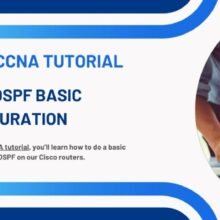Smart Phone Remote Controller ● Widespread Compatibility: Your smartphone can function effectively with the standard connector that is frequently used to replace iOS cellphones.● Plug and Play: Your smartphone may become an…
ECSAv10 EC-Council Certified Security Analyst

EC-Council Security Analyst v10 (ECSA)
The ECSAv10 curriculum provides a continuous learning path that picks up where the CEH programme left off.
Updated curricula and an industry-recognized complete step-by-step penetration testing methodology are included in the new ECSAv10.
This enables students to improve their ability to apply new abilities taught in intensive practical laboratories and challenges.
Unlike most other pen testing tools, which use a generic kill chain technique, the ECSA offers a collection of distinct comprehensive methodologies that may be used to address a variety of pen-testing needs across several industries.
It is a 5-day rigorous, highly interactive, comprehensive, standards-based training program that teaches information security professionals how to conduct professional real-world penetration testing.
[ufwp id=”2709604″]
There re-engineered the ECSA program as a progression from the past, based on the knowledge, skills, and abilities covered in the new CEH v10 curriculum.
Today’s organisations want a professional quality pentesting program, not merely pentesting programs that teach how to hack via applications and networks.
This course is part of the EC-VAPT Council’s Track. This is a “Professional” level course, with the “Core” certification being Certified Ethical Hacker and the “Master” certification being Licensed Penetration Tester.
Students who pass the knowledge exam in the new ECSAv10 course have the opportunity to take a completely practical exam, which allows them to put their skills to the test and receive the ECSA (Practical) credential. Employers can readily verify a student’s competence with this new certificate.
What’s New in ECSA v10?
Maps to NICE 2.0 Framework
ECSAv10 maps to NICE framework’s Analyze (AN) and Collect and
Operate (CO) specialty area
ALL NEW Module for Social Engineering Pen Testing
The ECSA curriculum presents a comprehensive Social Engineering Pen Testing Methodology
where others program only makes a mere reference of this. According to 2017 Verizon Data Breach
Investigation Report, on an overall, 43% of the documented breaches involved social engineering
attacks!
Increased Focus on Methodologies
ECSA V10 from ec-council brings an enhanced concentration on methodology for network, web application, database,
wireless, and cloud pen testing, whereas other certifications cover this superficially.
The new ECSA v10 program takes the tools you have learnt in the CEH and includes a wide-range of
comprehensive scoping and engagement penetration testing methodologies that improves upon the
best from ISO 27001, OSSTMM, and NIST Standards.
[ufwp id=”2709604″]
Blended with both manual and automated penetration testing approach
There are many numbers of automated pen testing tools out there in the marketplace including high priced sophisticated tools, but they are not adequate. Most advanced tools are of little value if no one
knows how to use them.
Manual penetration testing is the perfect complement to automated penetration Testing. Certain
penetration test such as logic testing cannot be performed using automated tools. It requires human
intervention to test against such vulnerabilities.
According to the MITRE Corporation, automated pen testing tools cover only 45% of the known
vulnerability types. Hence, the remaining 55% requires manual intervention.
[ufwp id=”3733378″]
outline of ECSAv10
1.Introduction to Penetration Testing and
Methodologies
- Penetration Testing Scoping and Engagement
Methodology - Open Source Intelligence (OSINT) Methodology
- Social Engineering Penetration Testing
Methodology - Network Penetration Testing Methodology –
External - Network Penetration Testing Methodology –
Internal - Network Penetration Testing Methodology –
Perimeter Devices - Web Application Penetration Testing
Methodology - Database Penetration Testing Methodology
- Wireless Penetration Testing Methodology
- Cloud Penetration Testing Methodology
- Report Writing and Post Testing Actions
[ufwp id=”2709604″]
Lets study some ECSAv10 question and answers
Question 1
josephine, a penetration tester, was hired by X security Services. Joseph was asked to perform a pen test on a client’s network. He was not provided with any information about the client organization except the company name.
Identify the type of testing Joseph is going to perform for the client organization?
- A. White-box Penetration Testing
- B. Black-box Penetration Testing
- C. Announced Testing
- D. Grey-box Penetration Testing
Answer 1 B
Question 2
Martin, a penetration tester in a pen test firm, was asked to get the information about the SMTP server on a target network.
What does William need to do to get the SMTP server information?
- A. Send an email message to a non-existing user of the target organization and check for bounced mail header
- B. Examine the session variables
- C. Examine TCP sequence numbers
- D. Look for information available in web page source code
Answer 2 A
Question 3
An organization deployed Microsoft Azure cloud services for running their business activities. They appointed Jamie, a security analyst for performing cloud penetration testing. Microsoft prohibits certain tests to be carried out on their platform.
Which of the following penetration testing activities Jamie cannot perform on the Microsoft Azure cloud service?
- A. Post scanning
- B. Denial-of-Service
- C. Log monitoring
- D. Load testing
Answer 3 B
Question 4
Rony is a security consultant at Big Frog Software Pvt Ltd. He is an expert in Foot-printing and Social engineering tasks. His team lead tasked him to find details about the target through passive reconnaissance. James used websites to check the link popularity of the clientג€™s domain name.
What information does the link popularity provide?
- A. Information about the network resources
- B. Information about visitors, their geolocations, etc.
- C. Information about the server and its infrastructure
- D. Information about the partner of the organization
Answer 4 D
[ufwp id=”3733378″]
Question 5
Eva, a wireless network auditor, discovered her client is using WEP. To prove the point that the WEP encryption is very weak, she wants to decrypt some WEP packets. She successfully captured the WEP data packets, but could not reach the content as the data is encrypted.
Which of the following will help Sandra decrypt the data packets without knowing the key?
- A. Fragmentation Attack
- B. Chopchop Attack
- C. ARP Poisoning Attack
- D. Packet injection Attack
Answer 5 B
Question 6
Marcel is a penetration tester in Stanbiz Ltd. As a part of his duty, he was analyzing the network traffic by using various filters in the Wireshark tool. While sniffing the network traffic, he used ג€tcp.port==1433ג€ Wireshark filter for acquiring a specific database related information since port number 1433 is the default port of that specific target database.
Which of the following databases Nick is targeting in his test?
- A. PostgreSQL
- B. Oracle
- C. MySQL
- D. Microsoft SQL Server
Answer 6 D
[ufwp id=”3733378″]
Question 7
An organization has deployed a web application that uses encoding technique before transmitting the data over the Internet. This encoding technique helps the organization to hide the confidential data such as user credentials, email attachments, etc. when in transit. This encoding technique takes 3 bytes of binary data and divides it into four chunks of 6 bits. Each chunk is further encoded into respective printable character.
Identify the encoding technique employed by the organization?
- A. Unicode encoding
- B. Base64 encoding
- C. URL encoding
- D. HTMS encoding
Answer 7 B
[ufwp id=”2709604″]
Question 8
Eddy, is a penetration tester and network admin at McLaren & McLaren, based out of Washington. The company has recently deployed IPv6 in their network. Sam found problems with the protocol implementation and tried to redeploy IPv6 over IPv4. This time, he used the tunneling mechanism while deploying the IPv6 network.
How does the tunneling mechanism work?
- A. It encapsulates IPv6 packets in IPv4 packets
- B. It transfers IPv4 first and the IPv6
- C. It splits the IPv4 packets and provides a way to IPv6
- D. It replaces IPv4 with IPv6
Answer 8 A
Question 9
Dante, is a network admin working in Zero Faults Inc. Recently the companyג€™s network was compromised and is experiencing very unusual traffic. Dale checks for the problem that compromised the network. He performed a penetration test on the networkג€™s IDS and identified that an attacker sent spoofed packets to a broadcast address in the network.
Which of the following attacks compromised the network?
- A. ARP Spoofing
- B. Amplification attack
- C. MAC Spoofing
- D. Session hijacking
Answer 9 B
Question 10
During an internal network audit, you are asked to see if there is any RPC server running on the network and if found, enumerate the associate RPC services.
Which port would you scan to determine the RPC server and which command will you use to enumerate the RPC services?
- A. Port 111, rpcinfo
- B. Port 111, rpcenum
- C. Port 145, rpcinfo
- D. Port 145, rpcenum
Answer 10 A
https://in.pinterest.com/itexamtools/Question 11
CCC Technologies, a large financial company, hired a penetration tester to do physical penetration testing. On the first day of his assignment, the penetration tester goes to the company posing as a repairman and starts checking trash bins to collect the sensitive information.
What is the penetration tester trying to do?
- A. Trying to attempt social Engineering using phishing
- B. Trying to attempt social engineering by shoulder surfing
- C. Trying to attempt social engineering by eavesdropping
- D. Trying to attempt social engineering by dumpster diving
Answer 11 – D
Question 12
The penetration testing team of MirTech Inc. identified the presence of various vulnerabilities in the web application coding. They prepared a detailed report addressing to the web developers regarding the findings. In the report, the penetration testing team advised the web developers to avoid the use of dangerous standard library functions. They also informed the web developers that the web application copies the data without checking whether it fits into the target destination memory and is susceptible in supplying the application with large amount of data.
According to the findings by the penetration testing team, which type of attack was possible on the web application?
- A. Buffer overflow
- B. SQL injection
- C. Cross-site scripting
- D. Denial-of-service
Answer 12 – A
Question 13
An attacker with a malicious intention decided to hack confidential data from the target organization. For acquiring such information, he started testing IoT devices that are connected to the target network. He started monitoring the network traffic passing between the IoT devices and the network to verify whether credentials are being transmitted in clear text. Further, he also tried to crack the passwords using well-known keywords across all the interfaces.
Which of the following IoT threats the attacker is trying to exploit?
- A. Poor physical security
- B. Poor authentication
- C. Privacy concerns
- D. Insecure firmware
Answer 13 – B
Agile project management Artificial Intelligence aws blockchain cloud computing coding interview coding interviews Collaboration Coursera css cybersecurity cyber threats data analysis data breaches data science data visualization devops django docker excel flask hacking html It Certification java javascript ketan kk Kubernetes machine learning mongoDB Network & Security network protocol nodejs online courses online learning Operating Systems Other It & Software pen testing python Software Engineering Terraform Udemy courses VLAN web development
Question 14
Edna is a Network Security Manager at Aidos Cyber Security. During a regular network audit, she sent specially crafted ICMP packet fragments with different offset values into the network, causing a system crash.
Which attack Alisa is trying to perform?
- A. Ping-of-death attack
- B. Fraggle attack
- C. Session hijacking
- D. Smurf attack
Answer 14 – A
Question 15
Genie and Rony, after investing in their startup company called Zamtac Ltd., developed a new web application for their company. Before hosting the application, they want to test the robustness and immunity of the developed web application against attacks like buffer overflow, DOS, XSS, and SQL injection.
What is the type of the web application security test Allen and Greg should perform?
- A. Web fuzzing
- B. Web crawling
- C. Web spidering
- D. Web mirroring
Answer 15 – A







